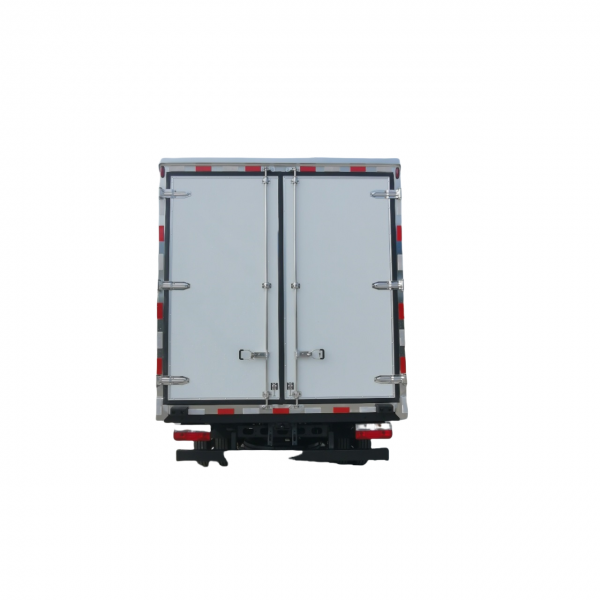Maximizing Efficiency and Safety Understanding Truck Mounted Crane Loading Capacity

Introduction
Truck mounted cranes play a vital role in various industries, enabling the lifting and transport of heavy materials with ease and efficiency. These specialized machines have revolutionized the way we handle heavy loads, offering a versatile solution for a wide range of applications. One of the key considerations when working with truck mounted cranes is understanding their loading capacity. In this comprehensive guide, we will explore the factors that influence loading capacity, safety considerations, and best practices for maximizing efficiency.
Chapter 1: Understanding Truck Mounted Cranes
Truck mounted cranes, also known as boom trucks or knuckle boom cranes, are mobile lifting devices mounted on trucks for enhanced mobility and versatility. These cranes consist of a telescopic boom or an articulating arm that can be extended and maneuvered to lift and move heavy loads. The design of truck mounted cranes allows for easy transportation to job sites, making them ideal for construction, logistics, and other industries that require heavy lifting capabilities.
Chapter 2: Loading Capacity Basics
Loading capacity refers to the maximum weight that a crane can safely lift and transport. It is crucial to understand the loading capacity of a truck mounted crane to ensure safe operations and prevent accidents. The loading capacity of a crane is determined by several factors, including the crane's structural design, hydraulic system, and stability features.
Chapter 3: Factors Influencing Loading Capacity
Several key factors influence the loading capacity of a truck mounted crane, including:
1. Structural Strength: The materials used in the construction of the crane, such as high-strength steel, impact the crane's overall lifting capacity.
2. Hydraulic System: The hydraulic system of the crane plays a critical role in lifting heavy loads efficiently. The power and speed of the hydraulic system determine the crane's lifting capacity.
3. Stability Features: Features such as outriggers, stabilizers, and counterweights help enhance the crane's stability and increase its loading capacity.
4. Boom Length and Configuration: The length and configuration of the crane's boom also impact its loading capacity. Longer booms can reach greater heights but may have a lower lifting capacity compared to shorter booms.
Chapter 4: Calculating Loading Capacity
Calculating the loading capacity of a truck mounted crane involves considering various factors to ensure safe and efficient operations. The formula for calculating loading capacity takes into account the crane's structural strength, hydraulic system capacity, stability features, and other relevant factors. It is essential to follow the manufacturer's guidelines and specifications when determining the maximum loading capacity of a crane to prevent overloading and potential accidents.
Chapter 5: Safety Considerations
Safety is paramount when working with truck mounted cranes, especially when handling heavy loads. more to keep in mind include:
1. Regular Inspections: Conduct regular inspections of the crane's components, including the boom, hydraulic system, and stability features, to ensure they are in good working condition.
2. Operator Training: Ensure that operators are properly trained and certified to operate the crane safely and effectively.

3. Load Limits: Always adhere to the crane's maximum loading capacity and avoid overloading to prevent accidents and damage to the equipment.
4. Site Conditions: Consider the terrain, weather conditions, and other site-specific factors when operating the crane to ensure safe and efficient operations.
Chapter 6: Best Practices for Maximizing Efficiency
To maximize the efficiency of truck mounted cranes, consider the following best practices:
1. Proper Maintenance: Regular maintenance and servicing of the crane are essential to ensure optimal performance and longevity.
2. Efficient Planning: Plan lifts in advance, considering factors such as load weight, distance, and site conditions to optimize efficiency.
3. Operator Training: Provide ongoing training and support to crane operators to enhance their skills and ensure safe operations.
4. Utilize Technology: Explore the latest technological advancements in crane operations, such as remote monitoring systems and load sensing devices, to improve efficiency and safety.
Conclusion
Truck mounted cranes are invaluable tools for lifting and transporting heavy materials in various industries. Understanding the loading capacity of these cranes is essential for safe and efficient operations. By considering factors such as structural strength, hydraulic system capacity, stability features, and safety considerations, operators can maximize efficiency and ensure the safe handling of heavy loads. Adhering to best practices and safety guidelines is crucial for maintaining a high level of performance and safety when working with truck mounted cranes.
